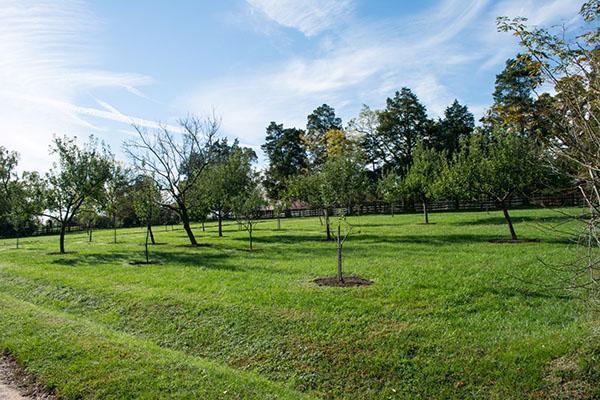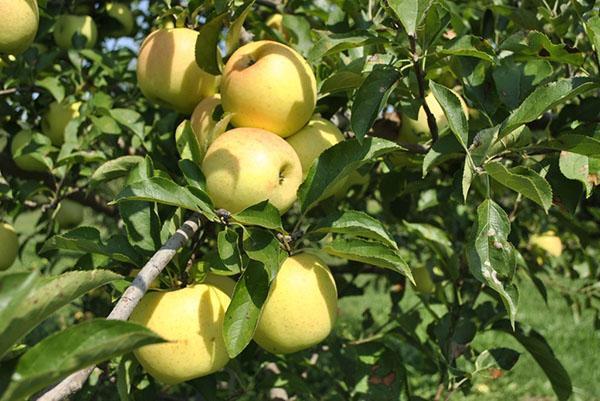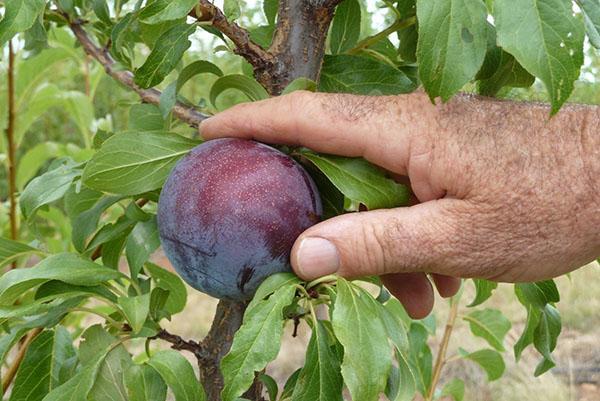Fruit trees and shrubs for the garden plot
 By purchasing fruit trees and shrubs for a garden plot, the owner lays the foundation for truly strategic plantings. For many years to come, they determine the appearance of the territory adjacent to the house, and with proper care they become the main source of fruit crops.
By purchasing fruit trees and shrubs for a garden plot, the owner lays the foundation for truly strategic plantings. For many years to come, they determine the appearance of the territory adjacent to the house, and with proper care they become the main source of fruit crops.
What fruit and berry crops are most often of interest to gardeners? How to arrange the plants you like on the site and find the right neighborhood for them?
Fruit trees and shrubs: photos and names of popular crops
Due to the length of the country, which is spread over several natural zones at once, it is almost impossible to designate a single list of trees and shrubs. And yet there are species for which gardeners are sure to try to find a suitable place. Photos and names of these fruit trees and shrubs are well known even to those who are far from gardening.

 Fruit and berry bushes, found almost everywhere, include raspberries, various types of currants, and gooseberries. Today it is actively gaining popularity:
Fruit and berry bushes, found almost everywhere, include raspberries, various types of currants, and gooseberries. Today it is actively gaining popularity:
- healing sea buckthorn;
- felt cherry;
- early honeysuckle.
 Blackberries move to the orchard, more and more often on the plots you can find chokeberry, irgu and other crops, which some time ago were perceived as secondary or planted only for landscaping.
Blackberries move to the orchard, more and more often on the plots you can find chokeberry, irgu and other crops, which some time ago were perceived as secondary or planted only for landscaping.
The list of shrubs for the garden is much broader than the above list of trees. No wonder. An orchard exclusively from trees will give its first harvest no earlier than 5-7 years, and the shrubs are ready to please the gardener already in the second or third year after planting.
 An additional advantage of shrubs is their relatively small size and less laboriousness in care. However, no one will be able to replace the pear with currants. Therefore, the garden will never be complete without trees.
An additional advantage of shrubs is their relatively small size and less laboriousness in care. However, no one will be able to replace the pear with currants. Therefore, the garden will never be complete without trees.
It is believed that in the northern regions, gardeners are limited in their choice by the harsh climate, but the further south, the more diverse the population of garden plots.
Indeed, starting from the Central black earth region, in the ranks of fruit and berry crops, it is not uncommon:
- apricot;
- cherry plum;
- mulberry;
- different types of nuts;
- cherry and its hybrid with cherry.
 The list of shrubs is growing grapes, yoshta, dogwood and perennial fruiting vines.
The list of shrubs is growing grapes, yoshta, dogwood and perennial fruiting vines.
But if until recently the gardeners of the middle lane and more northern regions were forced to be content with a very modest list of fruit and berry crops, today things are radically changing.
Nurseries have been successfully offering fruit trees and shrubs for the Moscow region for a long time, which were previously not available in the Non-Black Earth Region. The boundaries of the distribution of southern crops have seriously shifted to the north, not only due to climatic changes, but also thanks to the directed work of breeders.
 It is this bait that inexperienced gardeners fall for, who want, by all means, to get a "Garden of Eden" in a limited area. You can understand them! But it is not enough to buy seedlings, it is important to plant and grow them correctly, taking into account all the requests of plants and the characteristics of the territory.
It is this bait that inexperienced gardeners fall for, who want, by all means, to get a "Garden of Eden" in a limited area. You can understand them! But it is not enough to buy seedlings, it is important to plant and grow them correctly, taking into account all the requests of plants and the characteristics of the territory.
Rules for placing fruit trees and shrubs in the garden
 Young saplings planted in the garden increase their growth year after year. In a few years, when the time for fruiting comes, the crowns grow by 1.5–2 meters. And mature trees take up even more space.
Young saplings planted in the garden increase their growth year after year. In a few years, when the time for fruiting comes, the crowns grow by 1.5–2 meters. And mature trees take up even more space.
It is not enough to choose the most winter-hardy, productive varieties; it is necessary to accurately plan the future orchard.
It is better to do this on a piece of paper, based on measurements of the distances from the planting zone to the nearest buildings, roads, fences of neighboring properties. When planting fruit trees and shrubs in a garden plot, it is necessary to take into account not only the aesthetic preferences of the owner, but also the mandatory norms. They regulate the distance from large plants to residential and commercial buildings, transport routes, communications and the boundary line passing between sections.
So, for example, from an apple tree or a pear to a residential building or garage should be at least 3.5-4 meters. This distance is due to the safe operation of the building and the need for constant care for a large horticultural crop. For shrubs, the distance is less and is one and a half meters, which makes it possible:
- to carry out maintenance of walls, windows and other structures and communications without hindrance;
- do not be afraid of excessive moisture in close contact with vegetation;
- take care of fruit and berry crops, harvest, cut and replant them.
 In addition to the mandatory, common sense and safety restrictions, there are other rules that should be considered when planning an orchard.
In addition to the mandatory, common sense and safety restrictions, there are other rules that should be considered when planning an orchard.
It is extremely important to adhere to the distance between seedlings in rows, as well as to take into account the deadline for growing a particular crop in one place.
Useful and harmful neighborhood of fruit trees and shrubs in the garden
 Knowledge of the needs of certain types of plants and their characteristics is of considerable importance for the future planting:
Knowledge of the needs of certain types of plants and their characteristics is of considerable importance for the future planting:
- Some crops prefer to grow in the sun, others easily adapt to the shade.
- For some of the fruit trees and shrubs in the garden area, an open place, blown by all winds, is suitable, and the other will have to find shelter.
- Plants' demands for fertility and watering vary.
It is unlikely that in the limited area of the site it will be possible to please all the requests of green pets. In a small country garden, inevitably some shrubs find themselves under the crowns of growing trees. So that such a neighborhood does not affect the yield, the meta for planting shade-loving fruit trees and shrubs in the garden is determined in advance.
These crops include black currants, honeysuckle, undersized, berry bushes such as cranberries, blueberries and lingonberries. If the shady corner of the garden is well ventilated, viburnum will settle well here. Blackberries and raspberries are grown in partial shade.
Gardeners have long noticed that even in comfortable conditions, garden plants sometimes refuse to bear fruit in full force, look depressed and grow poorly. It turns out that the reason for this behavior is an incorrectly chosen neighborhood. As in nature, in a fruit garden, trees, shrubs and herbaceous crops form tight communities. The above options for a successful and dangerous neighborhood of fruit trees and shrubs in the table will help create the best conditions for each species and get the most out of it.
 You can arrange the plantings so that closely related plants are nearby. This solution will be extremely useful, for example, for cherries and petioles, many varieties of which are self-fertile, and they need a pollinator to get a harvest. A similar picture is observed when growing sea buckthorn. True, there must be one male bush for several female plants.
You can arrange the plantings so that closely related plants are nearby. This solution will be extremely useful, for example, for cherries and petioles, many varieties of which are self-fertile, and they need a pollinator to get a harvest. A similar picture is observed when growing sea buckthorn. True, there must be one male bush for several female plants.
 In addition, for sea buckthorn, which readily reproduces by root layers, blackberries and raspberries, it is better to find a place away from the rest of the garden plantings, otherwise the powerful shoots of these crops will master half of the garden in a year.
In addition, for sea buckthorn, which readily reproduces by root layers, blackberries and raspberries, it is better to find a place away from the rest of the garden plantings, otherwise the powerful shoots of these crops will master half of the garden in a year.
Hello. I'm new to gardening. And I have this question. Last year, in the fall, I planted different seedlings, most of them grew this summer, everything turned green, but some of the seedlings did not take root, is it worth leaving them for next year in the hope that they will still take root or already need to be dug up and thrown away and new ones to be planted in their place ... Thank.
Review your seedlings to understand the cause of the problem. If the root and trunk are alive, you can try to save the plants (sometimes nature fails). First check the trunk, and if the result is positive, proceed to the root system. If the result is positive, refresh the edges of the sections on the roots, treat with root or other root growth stimulant, prepare a nutrient mixture and plant a seedling. Better elsewhere.
I live in my house, I have a small garden of fruit trees. Some pluses. And the fruits are always fresh, and the trees are unpretentious, and the site is ennobled. The only difficulty for me was finding where to buy fruit trees, as I had heard enough of all sorts of horrors about low-quality seedlings, etc. I chose for a long time, read the reviews and eventually bought it from the hoga.ru online store. This is a plant nursery in the Moscow region, where you can come and choose everything in fact, or you can make an order via the Internet. It is very convenient, and, most importantly, the seedlings have taken root well.